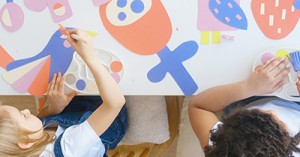In the rhythm of early childhood education, weekly programs often become the heartbeat of practice—a steady pulse of planned experiences, observations, and reflections. But what transforms a weekly plan from “meeting expectations” to “exceeding standards”? The answer lies not in the template, but in the texture of the program itself.
What Makes a Program “Exceeding”?
To achieve an Exceeding rating under the National Quality Standard (NQS), services must demonstrate that practice is:
- Embedded in service operations
- Informed by critical reflection
- **Shaped by meaningful engagement with families and communities
These aren’t just checkboxes—they’re living principles. An exceeding program is one that breathes with the children, evolves through educator insight, and resonates with the voices of families and community.
From Static Templates to Living Documents
Traditional weekly plans often rely on rigid grids: Monday to Friday, indoor/outdoor, intentional/spontaneous. While structure can scaffold consistency, it can also stifle responsiveness. Exceeding programs move beyond static templates by:
- Documenting evolving interests rather than pre-set activities
- Capturing educator reflections in real time, not just post-hoc
- Embedding cultural and emotional intelligence into every layer of planning
This shift doesn’t mean abandoning structure—it means reimagining it. Think of your program as a living document, one that grows with the children and adapts to the moment.
Voices That Shape the Program
Exceeding programs are co-authored. They reflect:
- Children’s questions, curiosities, and emotional states
- Families’ cultural knowledge, routines, and aspirations
- Educators’ insights, challenges, and evolving pedagogy
Rather than planning “for” children, exceeding educators plan with them. This might look like:
- Using voice bubble cards to capture children’s ideas
- Embedding family stories or recipes into the curriculum
- Reflecting on practice through symbolic journaling or team dialogue
Designing Tools That Support Exceeding Practice
To scaffold this approach, educators are increasingly turning to modular, emotionally intelligent tools:
- Visual planners that track evolving interests and reflections
- Symbolic documentation formats that honour children’s voices
- Culturally inclusive templates that celebrate diversity and belonging
These tools don’t just support compliance—they restore joy and dignity to the planning process.
An exceeding weekly program isn’t just a schedule—it’s a statement. It says, "We see children as capable, families as partners, and educators as reflective co-learners." It’s a living, breathing testament to what early childhood education can be when it’s grounded in authentic relationships, critical reflection, and cultural responsiveness.
Further Reading
Exceeding Guidance For Quality Area 1
Exceeding Guidance For Quality Area 1
Exceeding Theme 1 Across Quality Areas 1 to 7
Exceeding Theme 2 Across Quality Areas 1 to 7
Exceeding Theme 3 Across Quality Areas 1 to 7
How To Achieve Quality Area 1
Critical Reflection Questions For NQS QA1







 Here is the list of the EYLF Learning Outcomes that you can use as a guide or reference for your documentation and planning. The EYLF
Here is the list of the EYLF Learning Outcomes that you can use as a guide or reference for your documentation and planning. The EYLF The EYLF is a guide which consists of Principles, Practices and 5 main Learning Outcomes along with each of their sub outcomes, based on identity,
The EYLF is a guide which consists of Principles, Practices and 5 main Learning Outcomes along with each of their sub outcomes, based on identity, This is a guide on How to Write a Learning Story. It provides information on What Is A Learning Story, Writing A Learning Story, Sample
This is a guide on How to Write a Learning Story. It provides information on What Is A Learning Story, Writing A Learning Story, Sample One of the most important types of documentation methods that educators needs to be familiar with are “observations”. Observations are crucial for all early childhood
One of the most important types of documentation methods that educators needs to be familiar with are “observations”. Observations are crucial for all early childhood To support children achieve learning outcomes from the EYLF Framework, the following list gives educators examples of how to promote children's learning in each individual
To support children achieve learning outcomes from the EYLF Framework, the following list gives educators examples of how to promote children's learning in each individual Reflective practice is learning from everyday situations and issues and concerns that arise which form part of our daily routine while working in an early
Reflective practice is learning from everyday situations and issues and concerns that arise which form part of our daily routine while working in an early Within Australia, Programming and Planning is reflected and supported by the Early Years Learning Framework. Educators within early childhood settings, use the EYLF to guide
Within Australia, Programming and Planning is reflected and supported by the Early Years Learning Framework. Educators within early childhood settings, use the EYLF to guide When observing children, it's important that we use a range of different observation methods from running records, learning stories to photographs and work samples. Using
When observing children, it's important that we use a range of different observation methods from running records, learning stories to photographs and work samples. Using This is a guide for educators on what to observe under each sub learning outcome from the EYLF Framework, when a child is engaged in
This is a guide for educators on what to observe under each sub learning outcome from the EYLF Framework, when a child is engaged in The Early Years Learning Framework describes the curriculum as “all the interactions, experiences, activities, routines and events, planned and unplanned, that occur in an environment
The Early Years Learning Framework describes the curriculum as “all the interactions, experiences, activities, routines and events, planned and unplanned, that occur in an environment


